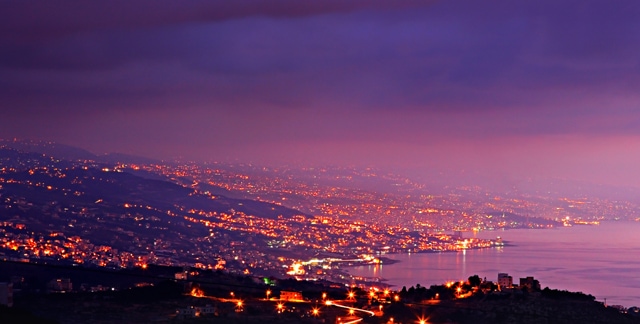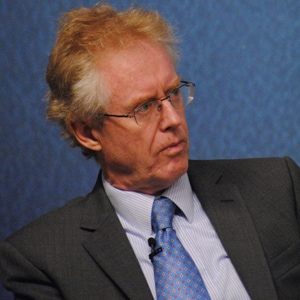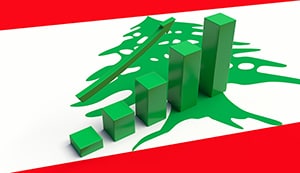Syria’s agony is imposing serious costs for neighbors in terms of refugees, lost trade and dampened investment.

In late September, Cyprus’ Energy minister, Yiorgos Lakkotrypis, and Egypt’s minister of mineral resources, Tarek el-Molla, signed a major agreement for transport of Cypriot natural gas to Egypt for consumption and re-export. They also agreed to speed talks on construction of a pipeline linking the countries.
“Cooperation in the oil and gas sector between the two countries will enhance relations between Cyprus and Egypt,” the two ministers said in a statement. “And [it] will also further unlock and promote the potential of the eastern Mediterranean as a whole.”
For weary observers of the Levant, the agreement—further discussed in mid-October by the leaders of Egypt, Cyprus and Greece at a top-level meeting in Cairo, where cooperation in energy, agriculture, tourism, shipping and commerce was also reviewed—came as something of a relief. Much like last year—and one might say, the year before—these are grim times for the Levant.
“It is impossible to view the Levant right now outside the context of the Syrian war,” says Ayham Kamel, senior analyst for the Levant at Eurasia Group. “There can be no hope of a return to stability until there is some sort of resolution to the conflict.” The good news—that the terrorist group Daesh (or ISIL) has been losing both territory and manpower—has been overshadowed by Russia’s growing involvement in support of the Assad regime. Fighting in Aleppo and other areas shows little sign of abating, while efforts to mediate a ceasefire have stumbled.
Syria’s economy is in ruins. According to a recent report by the Fitch Group, the economy contracted 25% each year in 2012 and 2013. All components of GDP have continued to contract, especially exports (with most of the country’s oil infrastructure either destroyed or immobilized), which have lost 80% of their value. The economy is expected to contract by at least a further 4% a year going forward; its overall size is expected to be about what it was in the early 1990s by 2020.
The war has burdened Syria’s neighbors, most notably Jordan and Lebanon, and complicates Turkey’s attempts to deal with its own crisis stemming in part from an attempted military coup in July. Syria’s agony is imposing serious costs on all three countries in lost trade and investment and having to care for and house the millions of refugees that have flowed across their borders.
Jordan is just getting by, sustained to a large degree by financial support from multilateral donors and Gulf nations. Lebanon remains stymied by a political crisis that has seen it without a president since May 2014, led instead by a unity government that has proven incapable of maintaining even basic services such as water, sanitation and electricity—and that has little control outside Beirut. Both nations, though, expect some growth this year.
Jordan is looking at GDP growth around 2.4%, with confidence buoyed by a $723 million World Bank loan aimed at improving the investment climate and enabling macroeconomic adjustments. “Things are still difficult here; for example, all the roads to Iraq remain closed, which leaves Jordan heavily dependent on Aqaba port for commerce,” says Heike Harmgart, head of the European Bank for Reconstruction and Development’s office in Amman. “But there seems to be genuine recognition by the government of what needs to be done to improve the situation for investors.”
Harmgart points to the new investment law and progress made since the IMF and donor conference in Jordan in February. The EU now plans to simplify rules of origin for exports from 18 major industrial areas and development zones, which could boost exports and encourage FDI in such key sectors as textiles.
“If all goes to plan, this [accommodation by the EU] could provide as much of a boost to Jordan as its 2010 free-trade agreement with the US,” she says.
By contrast, Lebanon can expect perhaps 1% growth in GDP. The banks have been buoyed by higher-than-expected deposit inflows—largely due to remittances from abroad (projected at $7.6 billion for 2016). The rest of the economy is at a virtual standstill.
“Lebanon continues to be affected by structural weaknesses, such as a low level of competitiveness, high operating costs, poor infrastructure, the burden of the public sector on the private, as well as by a weak investment climate and inadequate business environment,” notes Nassib Ghobril, chief economist at Byblos Bank. He says the persistent vacuum at the presidential level and uncertainty about elections are paralyzing decision-making.

Palestine’s economy continues to depend heavily on donor aid and Israeli support but has been battered by political instability. In August the authorities unleashed a “vision for the revival of the Palestine economy,” which includes a laundry list of initiatives to address the country’s problems and seeks support from local investors and the Bank of Palestine. Much needs to be done: Although GDP is expected to rise 3% this year, unemployment is the major concern—over 40% in Gaza.
By contrast, the outlook for Egypt is more encouraging. Despite huge loans from the Gulf states—including a $25 billion package from Saudi Arabia—the administration of Abdel Fattah al-Sisi has failed thus far to come to grips with the country’s endemic economic problems. These include high unemployment, a budget deficit of more than 10%, a current-account deficit of 7%, double-digit inflation and a grossly overvalued exchange rate—the official dollar exchange rate is around 8.5 Egyptian pounds, against a black market rate above 14—that leads to serious market distortions. Other concerns include the army’s close involvement in key areas of the economy: The private sector fears being squeezed out.
However, as Global Finance went to press, Cairo and the IMF were edging closer to agreement on a
“After all the false starts, there seems to be a new mood within the government,” says Jason Tuvey, Middle East analyst at Capital Economics in London, “an understanding they can’t stay on the same path of essentially doing nothing.” The most populous country in the Levant and indeed the Arab world, Egypt’s

potential is huge. A vast number of infrastructure projects need funding. Growth of some 4.5% is expected this year, a rate that could be sustained over the medium to long term, if reforms get under way.three-year, $12 billion loan that officials hope will be bolstered by new money from other sources, including the African Development Bank and Gulf states.
Unfortunately, Egypt’s business environment is among the worst in the world. The latest World Bank Ease of Doing Business survey ranks Egypt 131st, down five places from 2016, while Transparency International puts the country at 88 out of 168, with public-sector corruption cited as a big concern. A new investment law is being drafted, but observers say it will have to overturn negative perceptions about doing business here.
“The authorities have scored a few goals recently, including overtax rates in duty-free zones and their handling of 4G licensing with the telecoms companies,” says David Butter, associate fellow of the Middle East and North Africa program at Chatham House. “They will need to be careful if they want to stay on international investor radar.”
Cairo will also need to tread carefully in the diplomatic sphere. Its recent support for Russia’s actions in Syria—which run contrary to Saudi Arabian interests—led Riyadh in mid-October to halt vital fuel supplies in retaliation. Alienating the wealthy Gulf States is probably the last thing Egypt’s fragile economy needs.
Lebanon’s Banks Shine Through Dark Times
In many countries, banks are a source of embarrassment or anger, with memories of the financial crisis still raw. In Lebanon, by contrast, the banks are a source of pride, well-regulated and well-managed, seen as among the country’s more stable institutions at a time when the government struggles to do anything meaningful.
“The prevailing cliché is that the Lebanese banking sector is located on a remote island, has not been affected by the operating environment in Lebanon or by the slowing economic activity, and that it continues to post astronomical profits,” says Nassib Ghobril, chief economist at Byblos Bank.
That, he says, is a stretch: Low GDP growth, around 1%, in an economy accustomed to high growth before the Syrian civil war, has impacted return-on-average assets and return-on-average equity, which are currently around 1% and 12%, respectively.
However, Lebanon’s banks are continuing to lend to business. In total, they have lent $710 million to agriculture, $6.2 billion to industry, $10.9 billion to real estate developers, some $3.4 billion to retailers, $1.6 billion to hotels and restaurants, and $774 million to healthcare and social services.
Most important, they continue to attract private-sector deposits: a total of some $157.1 billion at the end of August, up 3.6% year-to-date and equivalent to three times the size of the Lebanese economy.
“The high level of trust has allowed banks to continue to attract deposits and, in turn, to contribute to economic stability, public finances and the monetary system,” says Ghobril.

Standard & Poors recently upgraded the three Lebanese banks it rates, largely because of the continued investment inflows from expatriates and remittances from Lebanese working abroad.
“After six years of domestic and regional turmoil, the Lebanese banking sector is still growing and remains profitable, in addition to having good financial standing (for instance: capital adequacy ratio at 14%; nonperforming loans at 3.6%; and liquidity at 57%),” says Saad Azhari, CEO of Blom Bank, one of the three banks S&P upgraded. He says the focus remains on being cautious and minimizing risk.
“We are expanding our presence overseas to diversify revenues and risk. In addition, we are diversifying products in retail, corporate, wealth management, private banking and insurance services to capture various economic sectors, income groups and demographic groups,” he says.
What Lebanon’s banks would like most is a change in central bank policy to enable meaningful consolidation. Though there has been some movement—in September, Byblos Bank purchased Banque Phararon and Chiha, established in 1876, with five branches and almost $250 million in deposits—some in the sector argue that eventually some consolidation is needed among the top 10 banks, which account for 80% of the industry’s assets.
If the sector had two or three megabanks created by consolidation, they could play a much more significant role in the region, boosting Lebanon’s business profile in key Gulf markets, says Freddie Baz, group strategy director for the Bank Audi Group. He admits, however, that this might not happen anytime soon.
“The central bank understandably has more pressing concerns right now, including maintaining macroeconomic stability and confidence,” he says.
Exceptionally Bright Spots
For those who say the Levant is nothing but bad news, two countries are proving otherwise—with both also set to benefit substantially from the development of the Levantine basin’s energy reserves.
Israel has long stood apart from its regional neighbors in the political terms, but its economy is also very much in a category of its own. Buoyed by large-scale foreign direct investment from such countries as the US, Israel has investment inflow close to the 20-year high, and also a dynamic small and midsize enterprise sector. Science, technology and IT fields are the biggest magnets for investors and have driven its economy over the past few years: GDP this year is expected to grow some 3.5% to 4%, ahead of preliminary estimates.
Cyprus, too, is a special case. Just a few years after Cyprus’ financial sector virtually imploded and the IMF came in to stabilize the island country and help put public finances back in order, things are on the up, buoyed by a resurgence in the key tourism sector. Cyprus exited the IMF program in July and expects growth of 2.7% this year, after S&P and Moody’s upgraded their outlooks from stable to positive. Big problems remain, of course. Bank nonperforming loans are some 60%—an amount equivalent to 150% of GDP. Public debt is also alarming, at more than 100% of GDP. Yet there is lots to look forward to, including maybe even a solution to the decades-old Cyprus problem: Talks between the north and south have been continuing with both sides making optimistic noises. And next year is expected to see a wave of privatizations to lure back foreign investors.
“One of the big attractions for investors here is our membership of the EU and the eurozone, with companies also recognizing this is the best place to access markets across the Levant,” says Natasa Pilides, head of the Cyprus Investment Promotion Agency.



